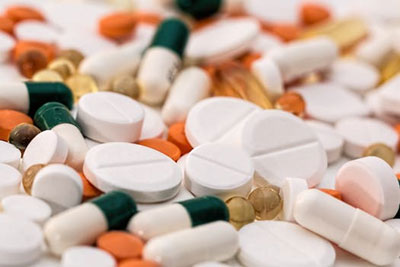Pharma industry’s issue with authorities
Sri Lanka’s pharmaceutical market in Sri Lanka is close to Rs. 80 billion including both the private and the state sector and 50 per cent of it supplied directly through the private sector, the industry said this week, in putting forward a case for a change in the current system of controlled prices of drugs .

File picture of drugs and pills
This is a significant contribution made to supply of medicine directly to the people, by the private sector. A further 10 per cent is supplied to the state-owned OSU-Sala network, said President of the Sri Lanka Chamber of Pharmaceutical Industry, Shyam Sathasivam addressing a round table media conference at the Taj Hotel in Colombo this week.
He said there are serious concerns affecting the pharmaceutical industry in Sri Lanka and plausible solutions need to be worked out to remedy the situation.
“We work with both the medical fraternity and the regulator employing more than a quarter million people of which 60,000 are directly and more than 200,000 indirectly employed by the industry. We also work with the Ministry of Health and the regulator and is affiliated to the Ceylon Chamber of Commerce.”
He cautioned that when quality of medicines are compromised it becomes a risk factor to patients. “As 85 per cent of the pharmaceutical products are imported the exchange rate impacts significantly on the pricing formula of pharmaceuticals. That affects local stakeholders, importers, distributors and retailers.”
He said the March 2014 CAA Gazette froze the pricing of all pharmaceuticals and the Sri Lanka rupee devalued from 132 to 162 for US$ 1, a devaluation of 23 per cent.
However in 2015, the National Medicines Regulatory Authority (NMRA) enforced the unilateral price freeze for all pharmaceuticals without providing the evidence based price adjustment approvals as given in the MNRA Act, despite repeated applications by the importers.
In 2016 according to NMRA Gazette, drastic price reduction on 48 molecules had further impacted the pharmaceutical industry when pharmaceutical importers reimbursed retailers and distributors for the losses.
In December 2017 a 5 per cent increase for 48 molecules was given acknowledging the Sri Lankan rupee fell from 148 to 155 for US$ 1, a devaluation of 5 per cent.
Meanwhile the annual inflation during this 4 –year period has been 7 per cent, while the industry’s operating costs have continued to increase, especially staff, fuel and electricity.
The Sri Lanka Chamber of the Pharmaceutical Industry represents more than 60 members across the health care value chain including four stakeholders like manufacturers, importers, distributors and retailers.
The manufacturers include both global and local manufacturers. Imported global pharmaceutical manufacturers account for 85 per cent of all medicine available in Sri Lanka. Kasturi Chellaraja Wilson, head of the pharma sector at the Hemas Group also spoke.


